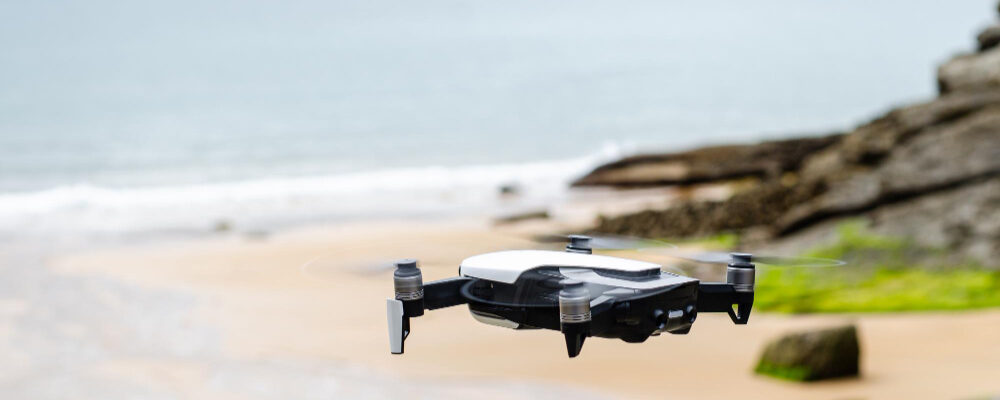Ethical hacking to malicious cyber activities In the intricate landscape of cybersecurity, the term "hacking" has…
UAV Magnetometer Hire for Accurate Magnetic Readings
Carrying out magnetic surveys over unexplored locations is never easy. You need the best equipment to get accurate magnetic readings. There’s also the hurdle of bypassing errors during such explorations. The dip and declination errors, observed so frequently during such explorations need to be taken into account. There’s been significant technological developments in the field of geophysics. One such development is the UAV-enabled magnetometers. When fitted with advanced magnetometers, these drones offer really sophisticated ways of subsurface mineral exploration, especially magnetic ores. If you’re interested in UAV magnetometer hire, then this article will take you through the important details of the magnetometer and how it has transformed the field of geophysical research.
What is a magnetometer?
A magnetometer is a device that in many ways is the mainstay of magnetic survey. It measures the properties of magnetic fields, namely strength and direction. It is also used to calibrate or standardise electromagnets. You can measure the magnetic field intensity of earth over a specific area using this device. Modern magnetometers are quite lightweight with complex electronic circuits and equipped with magnetic sensors and GPS. They are also compatible with drone software like UgCS, the most popular UAV software. You can check out the UgCS prices online.
What is the principle behind a UAV magnetometer?
The principle behind the design of a UAV magnetometer is detecting anomalies in Earth’s magnetic field. It operates based on the fact that the magnetic field of earth varies across different locations. The magnetometer onboard the UAV is an instrument that measures the variation in the magnetic field to detect magnetic presence.
When the UAV is flying over a specific area, the magnetometer detects the deviations in field strength. These variations can be caused by underground structures, geological formations, or mineral deposits, each of which has its own magnetic signature.
The operation of a magnetometer is quite simple. First, the details of the aerial survey is pre-programmed into the drone software, in this case, UgCS. The magnetometer is then turned on and the GPS data inputs that were already programmed into the software carries the device over the desired location. After the data collection process is over, you can download the data results into a computer.
What advantages do magnetometers provide in magnetic survey missions?
Here are some of the main advantages of using UAV magnetometers over traditional ground surveys in magnetic survey missions:
- Faster surveying: UAVs can collect data much more rapidly over large areas compared to ground teams carrying magnetometers by foot. This increased coverage speed allows more extensive surveying.
- Safer access: UAVs can safely reach or hover over terrain that is difficult, dangerous or inaccessible by ground crews. This includes sites like steep cliffs, swamps, sites with unexploded ordnance, etc.
- Higher resolution data: UAV magnetometers can fly at lower altitudes than manned aircraft and take readings every few feet. This collection density yields higher resolution readings that could miss small metal objects or local anomalies from the ground.
- More accurate geo-positioning: Onboard differential GPS integrated into the UAV magnetometer platform allows for precise latitude, longitude and altitude tagging of each collected reading for better data contextualization.
- Rapid deployment: UAV magnetometer systems can be easily transported then deployed quickly without extensive logistical support or site access preparations needed compared to ground surveys.
The integration of precise magnetometers onto UAVs is increasing the efficiency, resolution and flexibility of aerial magnetic surveying capabilities. However, ground surveys may still be warranted in sites with restrictions on airspace use. Overall the advantages lead many teams to now opt for UAV-based magnetic surveys when feasible.
Applications of a UAV Magnetometer
The applications of a UAV magnetometer are mostly related to underground surface assessments. By analysing the data collected by the UAVs magnetometer, researchers and geophysicists can create maps that highlight areas with abnormal magnetic readings. This is useful in various fields:
- Mineral Exploration: Certain minerals can affect the magnetic field, making it a valuable tool for identifying potential resource-rich areas. The magnetometer provides high-resolution magnetic data, free of errors, to identify mineral rich zones.
- Archaeological Mapping: Buried structures or artefacts can alter the local magnetic field, helping archaeologists locate hidden sites. By flying over archaeological sites, the UAV surveys large areas and reveals hidden structures.
- Geophysical Surveys: Understanding the subsurface composition and geological features of an area by analysing magnetic data aids in geological research and hazard assessment.
Overall, a UAV magnetometer hire enhances the efficiency and precision of data collection for applications that require detailed information about the Earth’s magnetic field and the underlying features of a particular region.
Key Takeaway
Whether you’re an industrial researcher interested in exploring mineral ores or an archaeologist on a mission to find buried historical artefacts, you would benefit from a UAV magnetometer hire. These sophisticated magnetometers can be used for aerial surveys, in difficult to access locations where ground survey is not always feasible. They are fitted with advanced magnetic sensors, GPS, and compatible with UAV software such as UgCS. Even after taking the UgCS prices into account, they are still highly affordable and more importantly, they make complex remote surveys a lot easier. Investing in a UAV magnetometer would definitely help you make the research breakthrough you’re looking for.





This Post Has 0 Comments